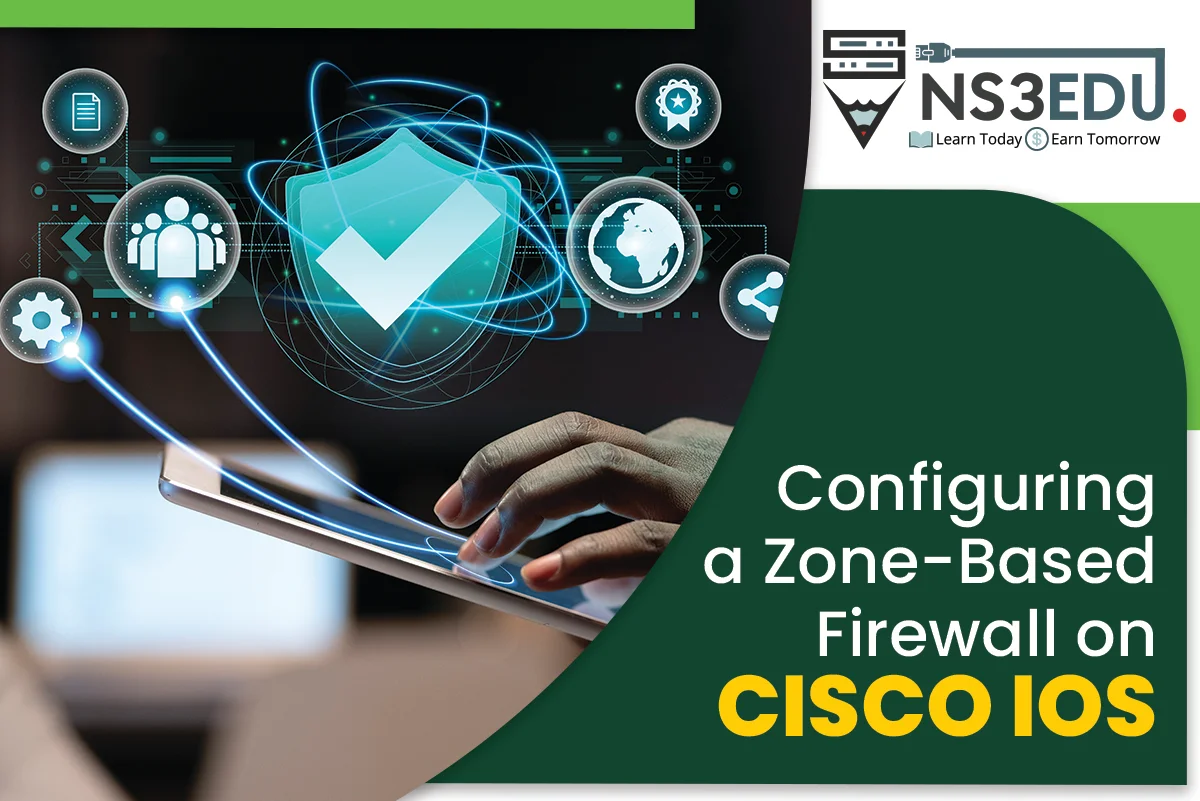
Configuring a zone-based firewall on Cisco IOS involves several steps:
Here’s a general outline:
Define Security Zones: Identify and name the zones based on your network topology and security requirements. Zones can represent different segments of your network, such as inside, outside, DMZ, etc.
Assign Interfaces to Zones: Associate each interface with its corresponding security zone. This can be done using the zone-member security command in interface configuration mode.
Create Zone Pairs: Define traffic flow policies by creating zone pairs. Each zone pair specifies the source and destination zones between which traffic will be controlled.
Apply Policies: Create and apply policies to control traffic between zone pairs. Policies can include rules to permit or deny traffic based on various criteria such as source/destination addresses, protocols, and port numbers.
Inspect Traffic: Optionally, enable application inspection to provide deeper visibility and control over traffic based on application-layer protocols.
Monitoring and Logging: Configure logging options to monitor firewall activity and generate logs for analysis and troubleshooting.
Here’s a basic example configuration:
! Define security zones:
#zone security inside
#zone security outside
! Assign interfaces to zones:
#interface GigabitEthernet0/0
#zone-member security inside
#ip address 192.168.1.1 255.255.255.0
#interface GigabitEthernet0/1
#zone-member security outside
#ip address 203.0.113.1 255.255.255.0
! Create zone pairs and apply policies:
#service-policy type inspect INSIDE-TO-OUTSIDE
#zone-pair security inside-to-outside source inside destination outside
! Define inspection policy:
#class-map type inspect match-any INSIDE-TO-OUTSIDE
#match protocol http
#match protocol https
#match protocol dns
#policy-map type inspect INSIDE-TO-OUTSIDE
#class type inspect INSIDE-TO-OUTSIDE
#inspect
